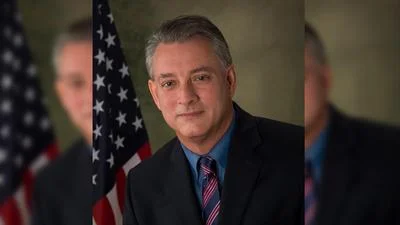The Congressional Record is a unique source of public documentation. It started in 1873, documenting nearly all the major and minor policies being discussed and debated.
“STATEMENTS ON INTRODUCED BILLS AND JOINT RESOLUTIONS” mentioning the U.S. Dept. of Justice was published in the Senate section on pages S11328-S11330 on Sept. 10, 2007.
The publication is reproduced in full below:
STATEMENTS ON INTRODUCED BILLS AND JOINT RESOLUTIONS
By Mr. WYDEN:
S. 2034. A bill to amend the Oregon Wilderness Act of 1984 to designate the Copper Salmon Wilderness and to amend the Wild and Scenic Rivers Act to designate segments of the North and South Forks of the Elk River in the State of Oregon as wild or scenic rivers, and for other purposes; to the Committee on Energy and Natural Resources.
Mr. WYDEN. Mr. President, Oregon's coastal forests contain many hidden gems. Within the lush rainforests of the Siskiyou-Rogue River National Forest, we find one of these gems--the headwaters of the North Fork of the Elk River, known as the Copper Salmon area. Today I introduce a bill to protect this natural treasure, which lies adjacent to the existing Grassy Knob Wilderness.
During the last decade, a dedicated group of local conservationists has been working hard to protect Copper Salmon. It is one of the last intact watersheds on the southwest Oregon coast. Copper Salmon is renowned among fishermen. For anglers seeking to catch a trophy chinook salmon or winter steelhead for the barbeque or smoker in Oregon, this is the place. Few watersheds in Oregon can match the Elk River drainage. Even after torrential rainstorms, anglers are still able to fish the Elk. When 25 inches of rain fell over 18 straight days last December, the Elk was still fishable while the other rivers in southwest Oregon, Rogue, Umpqua, Coquille, were clouded with debris and mud. Copper Salmon also supports healthy populations of blacktail deer, elk, black bear and mountain lion. This beautiful gem on the southwestern Oregon coast provides great and challenging opportunities here to hunt in freedom and solitude.
Mr. President, 80 percent of the watershed in this region is still intact. The Elk has healthy wild runs of winter steelhead and chinook. It also has some coho salmon and sea-run cutthroat trout, as well as resident cutthroats and rainbow trout. Oregon State University researchers believe it is one of the healthiest anadromous fish streams in the lower 48. There is a reason why: intact habitat.
My bill would provide permanent protections to 13,700 acres of new wilderness. It would also designate 9.3 miles of wild and scenic rivers. Wilderness and wild and scenic designations will protect this watershed and ensure that hunting and fishing opportunities are protected in the Copper Salmon area. Wilderness designation is popular in the local area, as evidenced by resolutions in favor of it from the Port Orford Chamber of Commerce, the mayor of Port Orford, and the Curry County Commissioners. Additionally, a majority of the guides, lodges and local citizens have supported this proposal. It is time now that we all come together and permanently protect this special place.
As Oregon's population grows, I believe that we must match this growth and the corresponding development with protection of our natural heritage. Protection of these areas will ensure that Oregonians and visitors will continue to enjoy opportunities to hike in the wilderness, hunt healthy populations of elk, blacktail deer, black bear, mountain lion and to catch trophy-sized chinook and steelhead.
I ask unanimous consent that the text of the bill be printed in the Record.
There being no objection, the text of the bill was ordered to be printed in the Record, as follows:
S. 2034
Be it enacted by the Senate and House of Representatives of the United States of America in Congress assembled,
SECTION 1. SHORT TITLE.
This Act may be cited as the ``Copper Salmon Wilderness Act''.
SEC. 2. FINDINGS.
Congress finds that--
(1) the proposed Copper Salmon Wilderness, comprising 13,700 acres, includes a significant portion of an inventoried roadless area adjacent to the Grassy Knob Wilderness area protected by the Oregon Wilderness Act of 1984 (16 U.S.C. 1132 note; Public Law 98-328);
(2) the proposed Copper Salmon Wilderness includes--
(A) the North Fork and South Fork of the Elk River;
(B) the upper Middle Fork of the Sixes River; and
(C) tributaries of the South Fork of Coquille River;
(3) the Elk River is designated as a Tier 1 Key Watershed;
(4) the fisheries of the Elk River are recognized as 1 of the best salmon and steelhead producers in the 48 contiguous States, producing more salmon per square meter than most rivers outside the State of Alaska;
(5) designation of the proposed Wilderness would provide permanent protection for the last remaining mammoth Port Orford Cedars in the Elk River watershed;
(6) the protection of the proposed Copper Salmon Wilderness is supported by the local communities near the proposed Wilderness, which have passed resolutions supporting the designation of the proposed Wilderness;
(7) the master plan for the economic stability of Curry County, Oregon, includes ecotourism and recreation as primary sources of income; and
(8) permanent protection for the proposed Copper Salmon Wilderness is needed to conserve the environment in southwestern Oregon.
SEC. 3. DESIGNATION OF THE COPPER SALMON WILDERNESS.
Section 3 of the Oregon Wilderness Act of 1984 (16 U.S.C. 1132 note; Public Law 98-328) is amended--
(1) in the matter preceding paragraph (1), by striking
``eight hundred fifty-nine thousand six hundred acres'' and inserting ``873,300 acres''; and
(2) in paragraph (29), by striking the period at the end and inserting ``; and''; and
(3) by adding at the end the following:
``(30) certain land in the Siskiyou National Forest, comprising approximately 13,700 acres, as generally depicted on the map entitled `Proposed Copper Salmon Wilderness Area', to be known as the `Copper Salmon Wilderness'.''.
SEC. 4. WILD AND SCENIC RIVER DESIGNATIONS, ELK RIVER,
OREGON.
Section 3(a)(76) of the Wild and Scenic Rivers Act (16 U.S.C. 1274(a)(76)) is amended--
(1) in the matter preceding subparagraph (A), by striking
``19-mile segment'' and inserting ``29-mile segment'';
(2) in subparagraph (A), by striking ``; and'' and inserting a period; and
(3) by striking subparagraph (B) and inserting the following:
``(B) The approximately 0.4-mile segment of the North Fork Elk from the source of the North Fork Elk in sec. 21, T. 33 S., R. 12 W., of the Willamette Meridian, downstream to 0.01 miles downstream of Forest Service Road 3353, as a scenic river.
``(C) The approximately 5.3-mile segment of the North Fork Elk from 0.01 miles downstream of Forest Service Road 3353 downstream to its confluence with the South Fork Elk, as a wild river.
``(D) The approximately 0.9-mile segment of the South Fork Elk from the source of the North Fork Elk in sec. 32, T. 33 S., R. 12 W., of the Willamette Meridian, downstream to 0.01 miles downstream of Forest Service Road 3353, as a scenic river.
``(E) The approximately 4.2-mile segment of the South Fork Elk from 0.01 miles downstream of Forest Service Road 3353 downstream to the confluence with the North Fork Elk, as a wild river.''.
______
By Mr. SPECTER (for himself, Mr. Lugar, and Mr. Schumer):
S. 2035. A bill to maintain the free flow of information to the public by providing conditions for the federally compelled disclosure of information by certain persons connected with the news media; to the Committee on the Judiciary.
Mr. SPECTER. Mr. President, I have sought recognition to introduce legislation to establish a reporter's privilege. The situation in the United States today is that newspaper reporters, journalists, are subject to a compulsory process to disclose confidential informants. The matter came to a head with the incarceration of a New York Times reporter, Judith Miller, for an extended period of time.
Last year, Senator Lugar and I introduced legislation to establish a reporter's privilege. Since that time, the legislation has been revised to provide limitations where national security is involved or where the reporter may be the eyewitness to a specific event.
This legislation differs from S. 1267, the bill which has been introduced by Senator Lugar and Senator Dodd, in that it tightens up exceptions where, for reasons of substantial public importance, the privilege will be limited. But today, there is a patchwork quality in the law, with the circuits going in different directions. Privileges are accorded under many State laws.
This bill has very widespread support. So on behalf of Senator Schumer, Senator Lugar, and myself, I introduce this bill.
I ask unanimous consent that the full text of my prepared statement be printed in the Record.
There being no objection, the material was ordered to be printed in the Record, as follows:
Mr. President, I seek recognition today to introduce, with Senators Schumer and Lugar, the Free Flow of Information Act of 2007. This bill would establish a Federal reporter's privilege to protect the free flow of information between journalists and confidential sources. It seeks to reconcile reporters' need to maintain confidentiality, in order to ensure that sources will speak openly and freely with the media, with the public's right to effective law enforcement and fair trials. Senator Lugar and I introduced a similar bill last year, which garnered the support of 10 cosponsors from both sides of the aisle, as well as 39 media organizations, including the Washington Post, The Hearst Corporation, Time Warner, ABC Inc., CBS, CNN, The New York Times Company, and National Public Radio.
There has been a growing consensus that we need to establish a Federal journalists' privilege to protect the integrity of the news gathering process, a process that depends on the free flow of information between journalists and whistleblowers, as well as other confidential sources.
Under my chairmanship, the Judiciary Committee held three separate hearings on this issue at which we heard from 20 witnesses, including prominent journalists like William Safire and Judith Miller, current and former Federal prosecutors, including Deputy Attorney General Paul McNulty, and First Amendment scholars.
These witnesses demonstrated that there are two vital, competing concerns at stake. On one hand, reporters cite the need to maintain confidentiality in order to ensure that sources will speak openly and freely with the news media. The renowned William Safire, former columnist for the New York Times, testified that ``the essence of news gathering is this: if you don't have sources you trust and who trust you, then you don't have a solid story--and the public suffers for it.'' Reporter Matthew Cooper of Time Magazine said this to the Judiciary Committee: ``As someone who relies on confidential sources all the time, I simply could not do my job reporting stories big and small without being able to speak with officials under varying degrees of anonymity.''
On the other hand, the public has a right to effective law enforcement and fair trials. Our judicial system needs access to information in order to prosecute crime and to guarantee fair administration of the law for plaintiffs and defendants alike. As a Justice Department representative told the Committee, prosecutors need to ``maintain the ability, in certain vitally important circumstances, to obtain information identifying a source when a paramount interest is at stake. For example, obtaining source information may be the only available means of preventing a murder, locating a kidnapped child, or identifying a serial arsonist.''
As Federal courts have considered these competing interests, they adopted rules that went in several different directions. Rather than a clear, uniform standard for deciding claims of journalist privilege, the Federal courts currently observe a ``crazy quilt'' of different judicial standards.
The current confusion began 33 years ago, when the Supreme Court decided Branzburg v. Hayes. The Court held that the press's First Amendment right to publish information does not include a right to keep information secret from a grand jury investigating a criminal matter. The Supreme Court also held that the common law did not exempt reporters from the duty of every citizen to provide information to a grand jury.
The Court reasoned that just as newspapers and journalists are subject to the same laws and restrictions as other citizens, they are also subject to the same duty to provide information to a court as other citizens. However, Justice Powell, who joined the 5-4 majority, wrote a separate concurrence in which he explained that the Court's holding was not an invitation for the Government to harass journalists. If a journalist could show that the grand jury investigation was being conducted in bad faith, the journalist could ask the court to quash the subpoena. Justice Powell indicated that courts might assess such claims on a case-by-case basis by balancing the freedom of the press against the obligation to give testimony relevant to criminal conduct.
In attempting to apply Justice Powell's concurring opinion, Federal courts have split on the question of when a journalist is required to testify. In the 33 years since Branzburg, the Federal courts are split in at least three ways in their approaches to Federal criminal and civil cases.
With respect to Federal criminal cases, five circuits--the First, Fourth, Fifth, Sixth, and Seventh Circuits--have applied Branzburg so as to not allow journalists to withhold information absent governmental bad faith. Four other circuits--the Second, Third, Ninth, and Eleventh Circuits--recognize a qualified privilege, which requires courts to balance the freedom of the press against the obligation to provide testimony on a case-by-case basis. The law in the District of Columbia Circuit is unsettled.
With respect to Federal civil cases, nine of the 12 circuits apply a balancing test when deciding whether journalists must disclose confidential sources. One circuit affords journalists no privilege in any context. Two other circuits have yet to decide whether journalists have any privilege in civil cases. Meanwhile, 49 States plus the District of Columbia have recognized a privilege within their own jurisdictions. Thirty-one States plus the District of Columbia have passed some form of reporter's shield statute, and 18 States have recognized a privilege at common law.
There is little wonder that there is a growing consensus concerning the need for a uniform journalists' privilege in Federal courts. This system must be simplified.
Today, we move toward resolving this problem by introducing the Free Flow of Information Act. The purpose of this bill is to guarantee the flow of information to the public through a free and active press, while protecting the public's right to effective law enforcement and individuals' rights to the fair administration of justice.
This bill also provides ample protection to the public's interest in law enforcement and fair trials. The bill provides a qualified privilege for reporters to withhold from Federal courts, prosecutors, and other Federal entities, confidential source information and documents and materials obtained or created under a promise of confidentiality. However, the bill recognizes that, in certain instances, the public's interest in law enforcement and fair trials outweighs a reporter's interest in keeping a source confidential. Therefore, it allows courts to require disclosure where certain criteria are met.
In most criminal investigations and prosecutions, the Federal entity seeking the reporter's source information must show that there are reasonable grounds to believe that a crime has occurred, and that the reporter's information is essential to the prosecution or defense. In criminal investigations and prosecutions of leaks of classified information, the Federal entity seeking disclosure must additionally show that the leak caused significant, clear, and articulable harm to the national security. In noncriminal actions, the Federal entity seeking source information must show that the reporter's information is essential to the resolution of the matter.
In all cases and investigations, the Federal entity must demonstrate that nondisclosure would be contrary to the public interest. In other words, the court must balance the need for the information against the public interest in newsgathering and the free flow of information.
Further, the bill ensures that Federal Government entities do not engage in ``fishing expeditions'' for a reporter's information. The information a reporter reveals must, to the extent possible, be limited to verifying published information and describing the surrounding circumstances. The information must also be narrowly tailored to avoid compelling a reporter to reveal peripheral or speculative information.
Finally, the Free Flow of Information Act adds layers of safeguards for the public. Reporters are not allowed to withhold information if a Federal court concludes that the information is needed for the defense of our Nation's security, as long as it outweighs the public interest in newsgathering and maintains the free flow of information to citizens, or to prevent an act of terrorism. Similarly, journalists may not withhold information reasonably necessary to stop a kidnapping or a crime that could lead to death or physical injury. Also, the bill ensures that both crime victims and criminal defendants will have a fair hearing in court. Under this bill, a journalist who is an eyewitness to a crime or tort or takes part in a crime or tort may not withhold that information. Journalists should not be permitted to hide from the law by writing a story and then claiming a reporter's privilege.
It is time to simplify the patchwork of court decisions and legislation that has grown over the last 3 decades. It is time for Congress to clear up the ambiguities journalists and the Federal judicial system face in balancing the protections journalists need in providing confidential information to the public with the ability of the courts to conduct fair and accurate trials. I urge my colleagues to support this legislation and help create a fair and efficient means to serve journalists and the news media, prosecutors and the courts, and most importantly the public interest on both ends of the spectrum.
____________________








